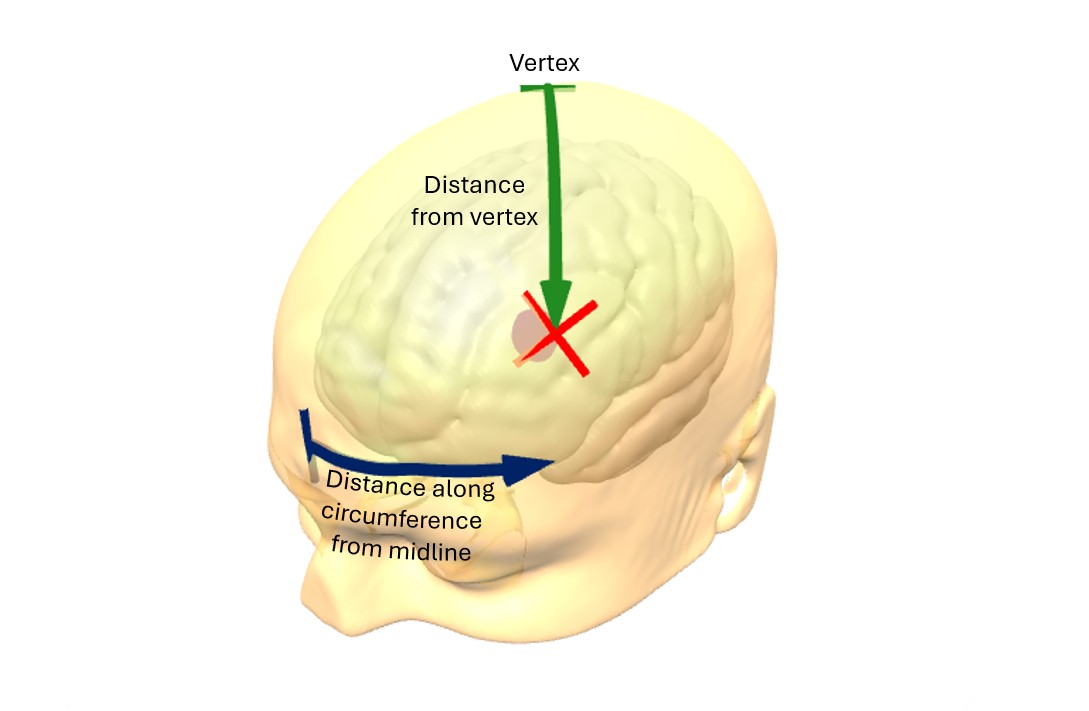TMS-TargetsTM
Step 3: Position TMS coil at the red X
| Distance along circumference from midline |
Distance from vertex | |
|---|---|---|
| --- cm | --- cm |

References and Notes
*Implements the web-version of Beam-F31 including the adjustment of Mir-Moghtadaei et al.2 Code was obtained directly from the developers of the web Beam-F3 program.
**Implements MRI-free head modeling approach of Valter et al.3
***MNI brain coordinates [-38, 44, 26] based on Fox et al.4
1. Beam W, Borckardt JJ, Reeves ST, George MS. An efficient and accurate new method for locating the F3 position for prefrontal TMS applications. Brain Stimul. 2009 Jan;2(1):50-4. doi: 10.1016/j.brs.2008.09.006.
2. Mir-Moghtadaei A, Caballero R, Fried P, Fox MD, Lee K, Giacobbe P, Daskalakis ZJ, Blumberger DM, Downar J. Concordance Between BeamF3 and MRI-neuronavigated Target Sites for Repetitive Transcranial Magnetic Stimulation of the Left Dorsolateral Prefrontal Cortex. Brain Stimul. 2015 Sep-Oct;8(5):965-73. doi: 10.1016/j.brs.2015.05.008.
3. Valter, Y., Truong, D. Q., Kawasumi, Y., Bikson, M., & Datta, A. (2025). TMS targeting using MRI-free head modeling. Transcranial Magnetic Stimulation, 5100188.
4. Fox, M. D., Buckner, R. L., White, M. P., Greicius, M. D., & Pascual-Leone, A. (2012). Efficacy of transcranial magnetic stimulation targets for depression is related to intrinsic functional connectivity with the subgenual cingulate. Biological Psychiatry, 72(7), 595–603. https://doi.org/10.1016/j.biopsych.2012.04.028
Developed by Yushi Kawasumi & Yishai Valter with research support from the NIMH and Soterix Medical
Disclaimer: Information provided by this website is not medical advice.
